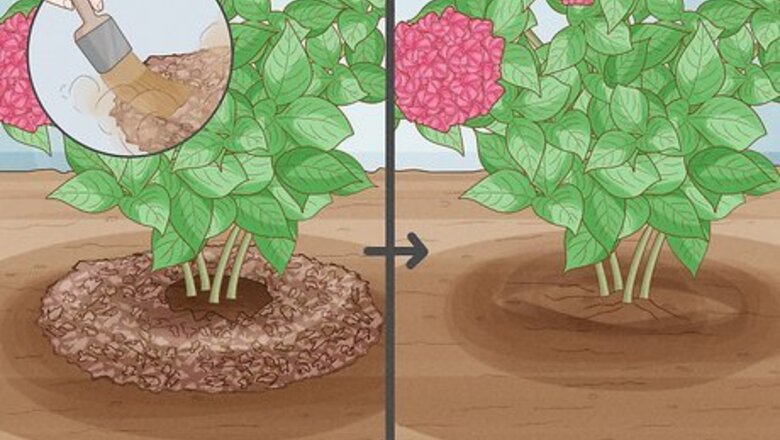
views
X
Research source
If you want to grow your own hydrangea plants, you can produce new specimens by growing hydrangeas from cuttings. Multiple propagation methods exist depending on whether you own the mother plant and how many cuttings you want to root.
Selecting Hydrangea Cuttings
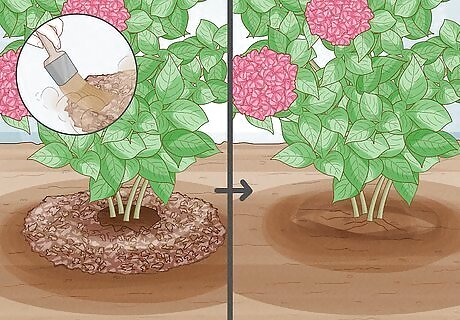
Brush away mulch and soil from the base of the back or side of a mature hydrangea plant.
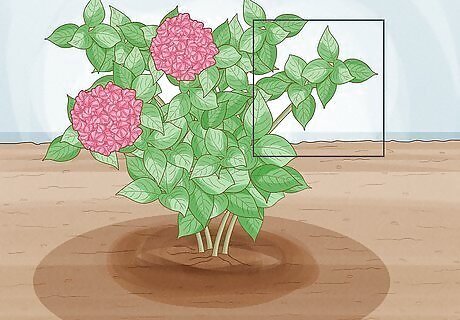
Look for a non-flowering shoot with 2 to 3 pairs of leaves. It is important to look for a cutting near the base of the plant, as woodier cuttings will generally produce more roots.
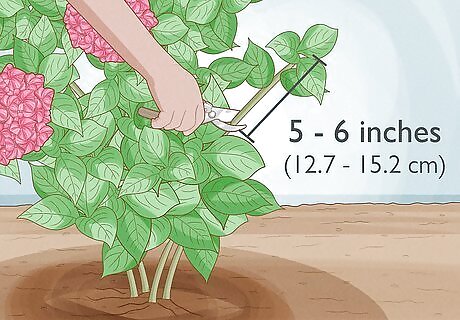
Make sure the proposed cutting is at least 5 to 6 inches (12.7 to 15.2 cm) in length.
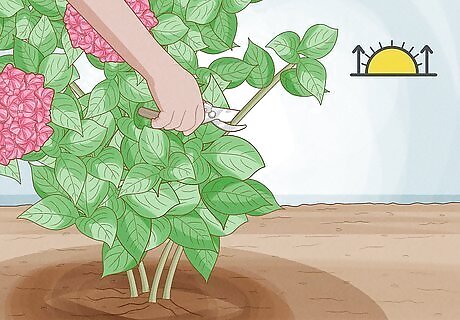
Select your hydrangea cutting in the morning. Avoid taking cuttings at any time when the plant's leaves are wilted.
Rooting Hydrangea Cuttings from the Bush
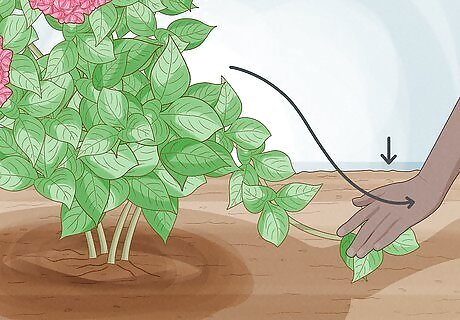
Bend a low branch on a hydrangea bush so that it touches the soil.

Keep the branch in place. Weigh it down with a brick, stone, or other heavy object.
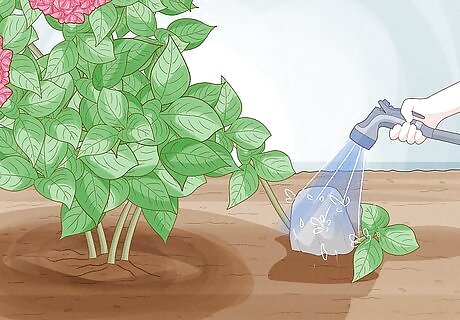
Continue to water the plant as normal. Keep the soil moist.
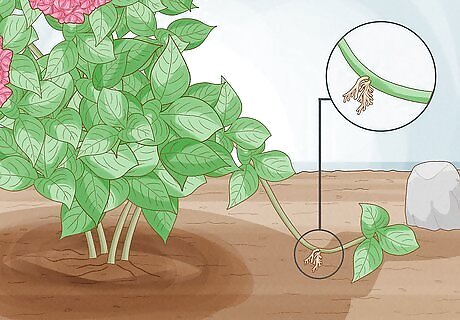
Remove the brick or stone and check the branch for roots.
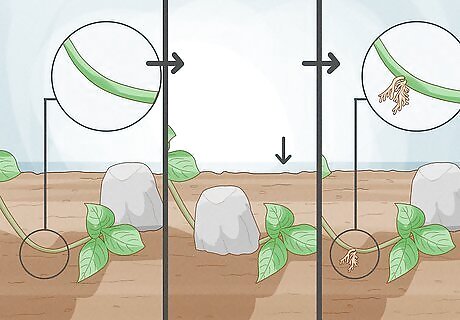
Replace the brick or stone if roots aren't present, or if they haven't reached the soil. Check again in another week for roots.
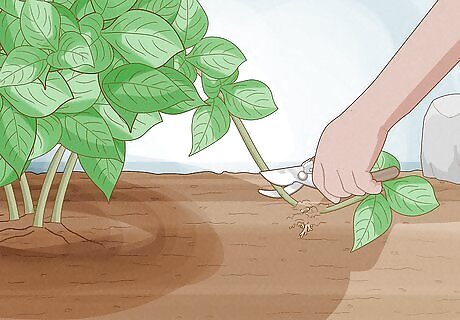
Cut branch from the mother plant.
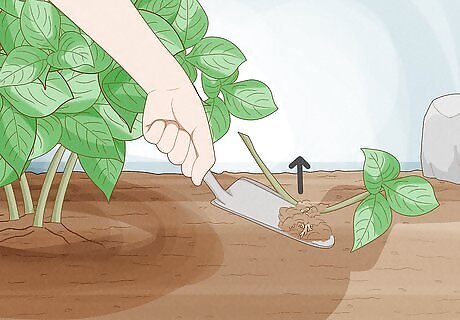
Dig up the rooted section from the ground. Be careful not to cut the roots of the cutting or the mother plant with your spade.
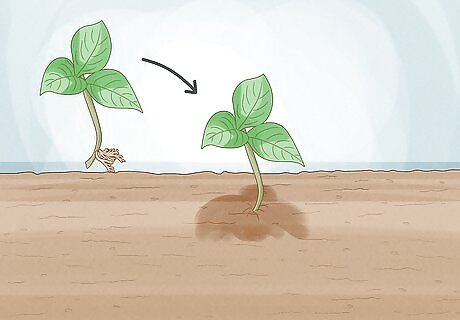
Transplant to the location where you want the hydrangea to grow. Make sure the plant will have partial shade.
Growing Hydrangea Cuttings in Pots

Prepare pots for your hydrangea cutting or cuttings. Use a soil mix that is 1 part potting mix or peat moss to 1 part sand or vermiculite. Add soil to the pots you want to use and dampen thoroughly. Check to make sure there are no dry areas in the soil.
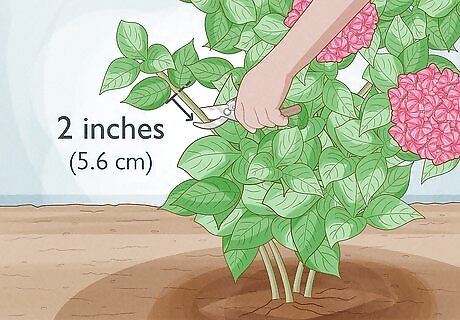
Remove the hydrangea cutting you selected with sharp scissors or pruning shears. Cut at least 2 inches (5.1 cm) below a leaf node.

Remove excess leaves. Cut off leaves below the top leaf pair, being careful to cut above the leaf nodes. Removing these leaves causes the plant to produce more roots.
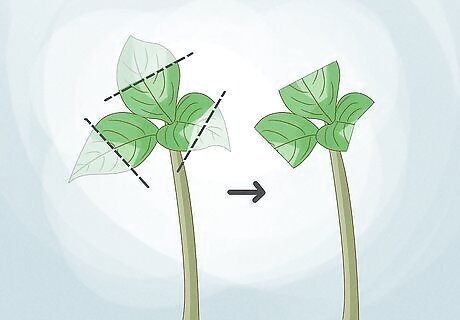
Trim top leaves. Although optional, if you trim the largest leaves to about half of their current size, it can help increase root production.
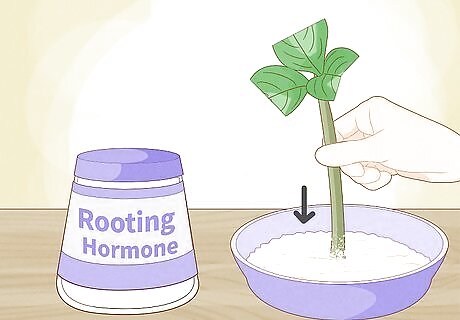
Dip the bottom of the hydrangea cutting in rooting hormone. You can use either a liquid or powder form of rooting hormone. Hydrangea cuttings will propagate without rooting hormone, but roots will grow more quickly if you use it.

Stick the cutting into the prepared pot. Push down gently until the cutting is 2 inches (5.1 cm) into the soil.

Allow the hydrangea cuttings to root. It will usually take 2 to 3 weeks for cuttings to root, but it may happen more quickly depending on temperature and humidity. Place your potted cuttings outdoors if your outside temperature ranges from 60 to 80 degrees F (15.5 to 26.7 degrees C) and you have an area available protected from wind with partial shade. Keep potted cuttings indoors if you are experiencing hotter or colder temperatures. Make sure the rooting hydrangea cuttings receive partial or filtered sunlight. Keep soil moist, but do not over water. Hydrangeas prefer not to dry out, but they also prefer not to be in any standing water.
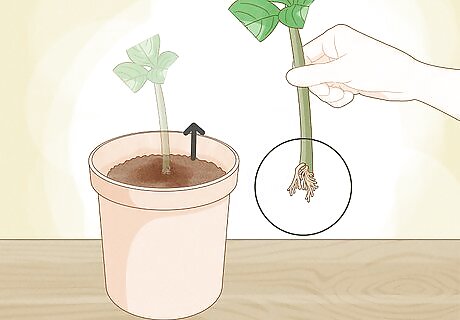
Pull gently on 1 of your hydrangea cuttings after 2 to 3 weeks. If you feel resistance, the cutting has rooted. You can transplant now or allow the cutting to further develop its root system.
Rooting Hydrangea Cuttings in Water
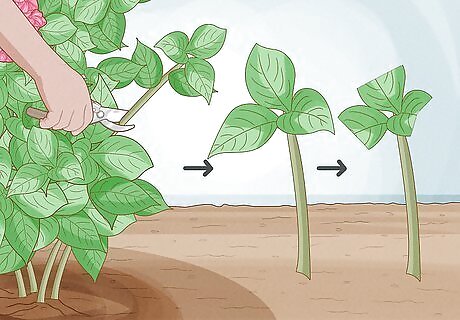
Prepare your hydrangea cutting by removing excess leaves from the stem. Cut a stem at least 4-5 inches long that doesn't have any flowers or buds on it. Trim off the base leaves. Trim half of the top leaf off.
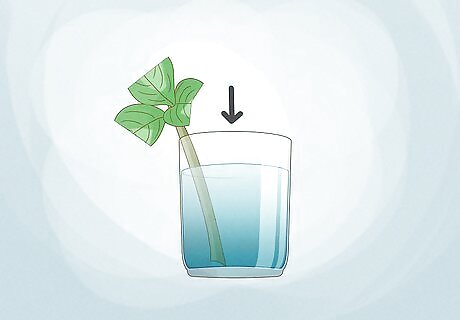
Set cutting in a vase or glass filled with water. A clear, glass container is best, as it allows you to see the roots once they start to form.
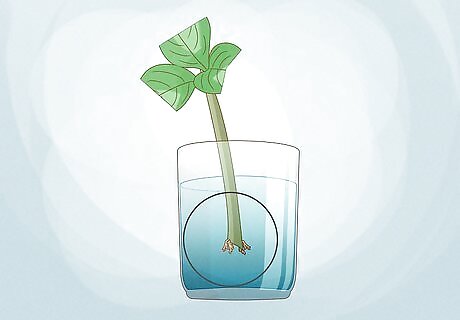
Wait for roots to appear.
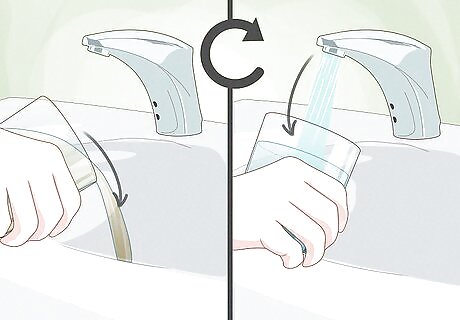
Change the water in the vase frequently to prevent molding.
Plant the cutting once roots appear.

















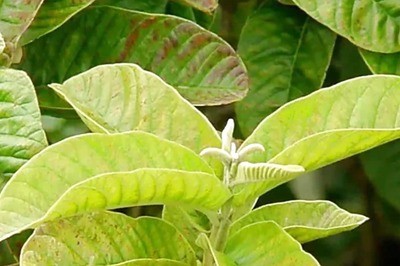


Comments
0 comment